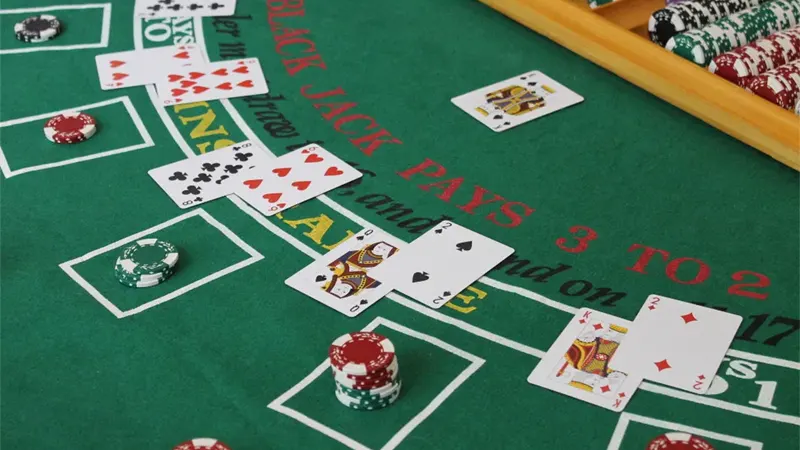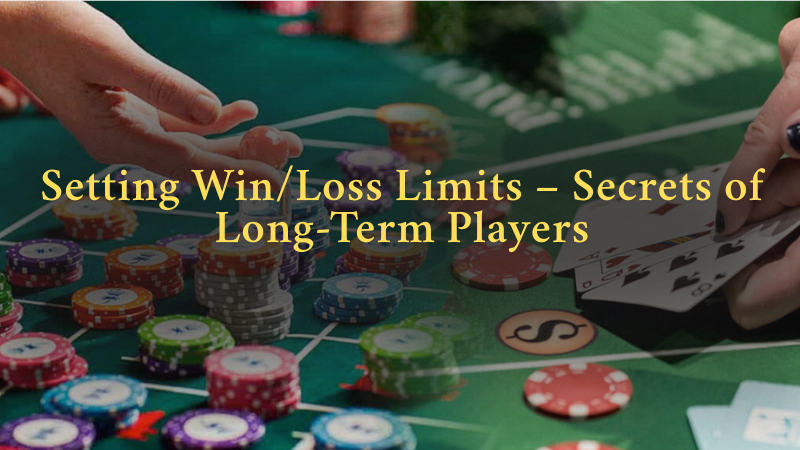In betting games like Baccarat, Keno, Roulette, and Fan Tan, the psychological aspect can easily lead to loss of control. The excitement of winning and the frustration of losing create powerful emotional responses that can cloud judgment and lead to poor decision-making. Without proper boundaries, even the most disciplined players can find themselves caught in cycles of chasing losses or becoming overconfident during winning streaks.
Experienced players at 82 Lottery consistently share one crucial insight: the secret to long-term survival in gambling is establishing clear win and loss limits. These veterans understand that gambling is not about hitting one big win, but rather about managing risk and maintaining psychological balance over extended periods.
These limits don’t guarantee wins, but they serve a more important purpose: preserving both capital and mental stability. By setting boundaries before emotions take over, players create a framework that allows them to enjoy gambling while protecting themselves from devastating losses.
Understanding Win/Loss Limits
Win limits, also known as Take Profit levels, represent the predetermined amount of profit at which a player will stop playing. For example, if you start with $100 and set a 50% win limit, you’ll stop playing when you reach $150. This prevents the common scenario where players give back their winnings by continuing to play during hot streaks.
Loss limits, or Stop Loss levels, work in the opposite direction. They represent the maximum amount a player is willing to lose in a single session. Using the same $100 example, a 30% loss limit means stopping when your bankroll drops to $70. This crucial boundary prevents catastrophic losses that can wipe out entire bankrolls.

The primary purpose of these limits is risk control and avoiding the psychological spiral that occurs during extreme winning or losing streaks. When players don’t have predetermined exit points, they often make emotional decisions that lead to giving back winnings or chasing losses with increasingly larger bets.
Benefits of Implementing Win/Loss Limits
The most obvious benefit of win/loss limits is protecting profits from being lost due to excessive greed. Many players experience the frustration of being ahead significantly, only to lose it all by continuing to play “just a little longer.” Win limits prevent this scenario by forcing players to secure their profits.
Equally important is capital preservation for long-term play. Loss limits ensure that players don’t exhaust their entire bankroll in a single session, allowing them to return another day. This approach treats gambling as a marathon rather than a sprint, focusing on longevity rather than quick gains.
From a psychological perspective, these limits provide tremendous stability. They eliminate the stress and regret that comes from not knowing when to stop. Players who use limits report feeling more relaxed and enjoying their gambling experience more, because they know exactly what their maximum exposure will be.
Statistics from 82 Lottery show that players who consistently follow disciplined limit-setting tend to maintain their bankrolls longer and report higher satisfaction with their gambling experiences. These players view each session as entertainment with defined costs, rather than as opportunities to solve financial problems.
Expert Strategies for Setting Limits from 82 Lottery Veterans
1. Base Percentages on Total Bankroll
Experienced players recommend setting limits as percentages of your total gambling bankroll rather than arbitrary dollar amounts. A common approach is setting win limits at 30% of your starting bankroll and loss limits at 20%. For example, with a $500 bankroll, you might stop at $650 profit or $400 remaining.
The specific percentages vary by individual risk tolerance and gambling experience. Conservative players might use 20% win limits and 15% loss limits, while more aggressive players might use 50% win limits and 30% loss limits. The key is choosing numbers that feel realistic and sustainable for your situation.
2. Absolute Discipline in Following Limits
The most critical aspect of limit-setting is unwavering adherence to the predetermined boundaries. Experienced players emphasize that limits must never be adjusted based on emotions or “gut feelings” during play. The temptation to extend limits when you’re close to a win target or to “chase” losses beyond your stop point is exactly when discipline becomes most important.

Many successful players write down their limits before starting and keep them visible throughout their session. Some even tell friends or family members about their limits to create external accountability.
3. Stop When Limits Are Reached, Even During Hot Streaks
One of the hardest disciplines for players to develop is stopping when ahead. The concept of “Play Responsibly” includes recognizing that today’s win limit might be tomorrow’s starting point. Veterans understand that gambling involves natural ups and downs, and protecting profits during good runs is essential for long-term success.
When players reach their win limits, they often feel like they’re “on a roll” and want to continue. However, experienced players know that streaks can end quickly, and the player who walks away with profits is always better off than the player who gives them back.
4. Track Results and Adjust Accordingly
Successful limit-setters maintain detailed records of their gambling sessions, including starting bankroll, limits set, results achieved, and emotional state throughout play. This data helps them identify patterns and adjust their limits over time to optimize their experience.
For example, if a player consistently reaches their loss limit before getting any enjoyment from their session, they might need to lower their bet sizes or increase their loss limit slightly. Conversely, if they rarely reach their win limit, they might consider setting more achievable targets.
5. Integrate with Overall Bankroll Management
Win/loss limits work best when combined with broader bankroll management strategies. This includes not betting too large a percentage of your bankroll on any single bet, dividing your total bankroll into smaller session bankrolls, and never gambling with money needed for essential expenses.
Many experienced players use the “1% rule,” never betting more than 1% of their total bankroll on any single bet. This conservative approach ensures that even a long losing streak won’t devastate their entire gambling budget.
Common Mistakes When Applying Limits
Setting Unrealistic Limits
One frequent mistake is setting win limits so high that they’re rarely achieved, or loss limits so low that they’re hit quickly without providing adequate playing time. Both scenarios reduce the effectiveness of the limit-setting strategy and can lead to frustration and abandonment of the system.
Extending Limits Mid-Session
The most dangerous mistake is adjusting limits during play based on emotional impulses. Players who are close to their win limit might think “just a few more hands” or those approaching their loss limit might decide to “give it one more try.” These decisions almost always lead to worse outcomes than sticking to the original plan.

Failing to Adjust for Bankroll Changes
As players’ bankrolls grow or shrink over time, their limits should be adjusted accordingly. Using the same dollar amounts regardless of bankroll size can lead to taking inappropriate risks or missing opportunities for reasonable profit-taking.
Tips for Maintaining Discipline and Psychological Stability
The foundation of successful limit-setting is viewing gambling as entertainment rather than a path to quick wealth. This mindset shift helps players accept both wins and losses as natural parts of the gambling experience, making it easier to stick to predetermined limits.

Taking breaks after reaching either win or loss limits helps maintain perspective and prevents emotional decision-making. Many experienced players have a rule of waiting at least 24 hours before starting a new session after hitting any limit.
Involving friends or family members in your limit-setting process can provide valuable external accountability. Some players share their limits with trusted individuals who can provide gentle reminders when needed.
82 Lottery suggests using system reminders or alerts to help maintain discipline. Many platforms offer features that can automatically notify players when they approach their predetermined limits, providing an external check on emotional impulses.
The Secret to Long-Term Success at the Tables
Gambling can be incredibly engaging and exciting, but experienced players understand that discipline is the key to longevity. The thrill of the game can easily override logical thinking, which is why having predetermined boundaries is so crucial for long-term success.
82 Lottery encourages all players to adopt responsible gambling practices to ensure safe, enjoyable, and sustainable gaming experiences. The platform provides tools and resources to help players implement and maintain effective limit-setting strategies.
By following these time-tested strategies from experienced players, newcomers can avoid many of the common pitfalls that lead to gambling problems. The key is starting with realistic limits, maintaining strict discipline, and always remembering that the goal is entertainment, not financial gain.
Remember that developing good limit-setting habits takes time and practice. Even experienced players occasionally struggle with discipline, but those who consistently apply these principles enjoy gambling more and experience fewer negative consequences from their play.


